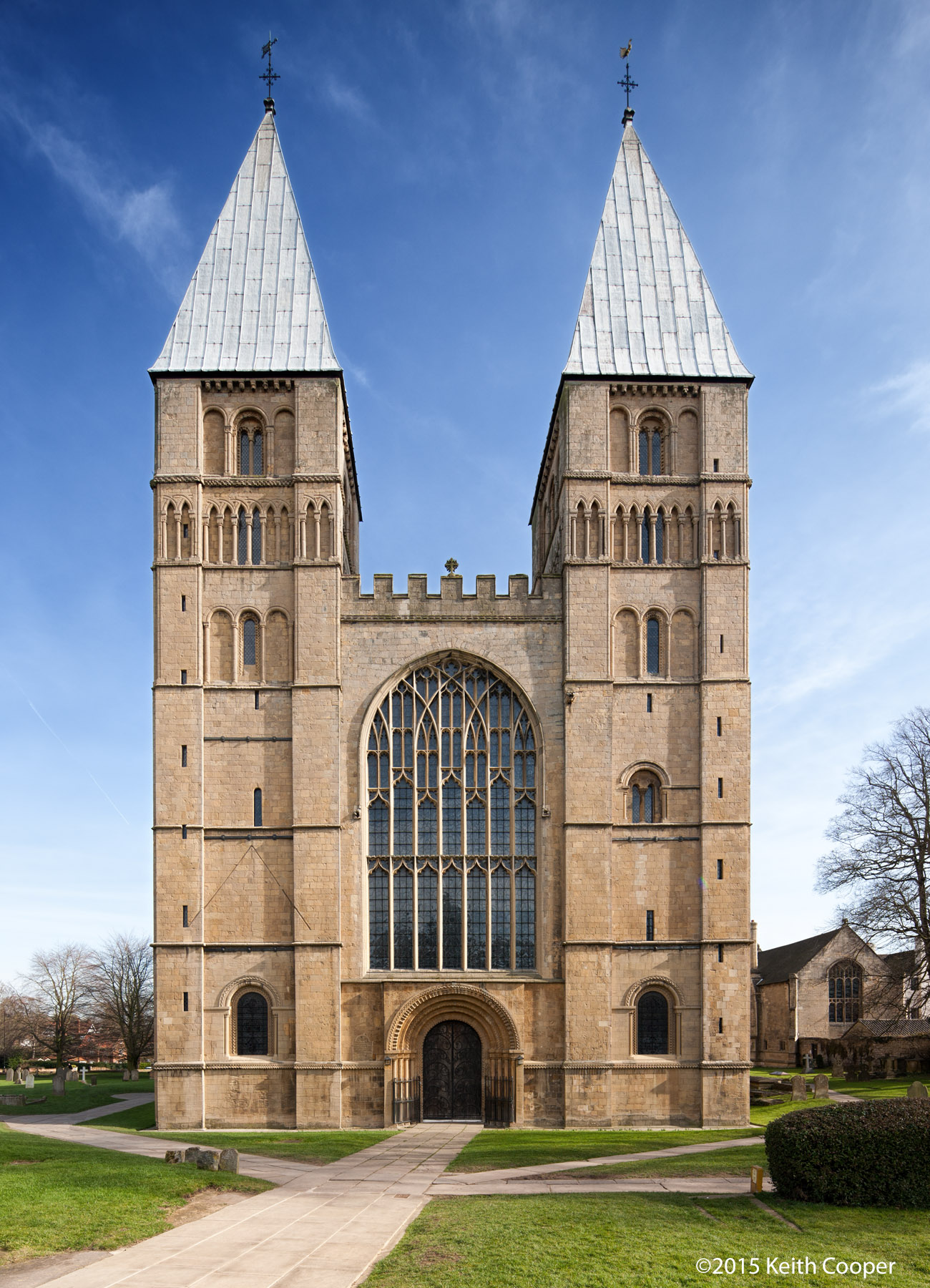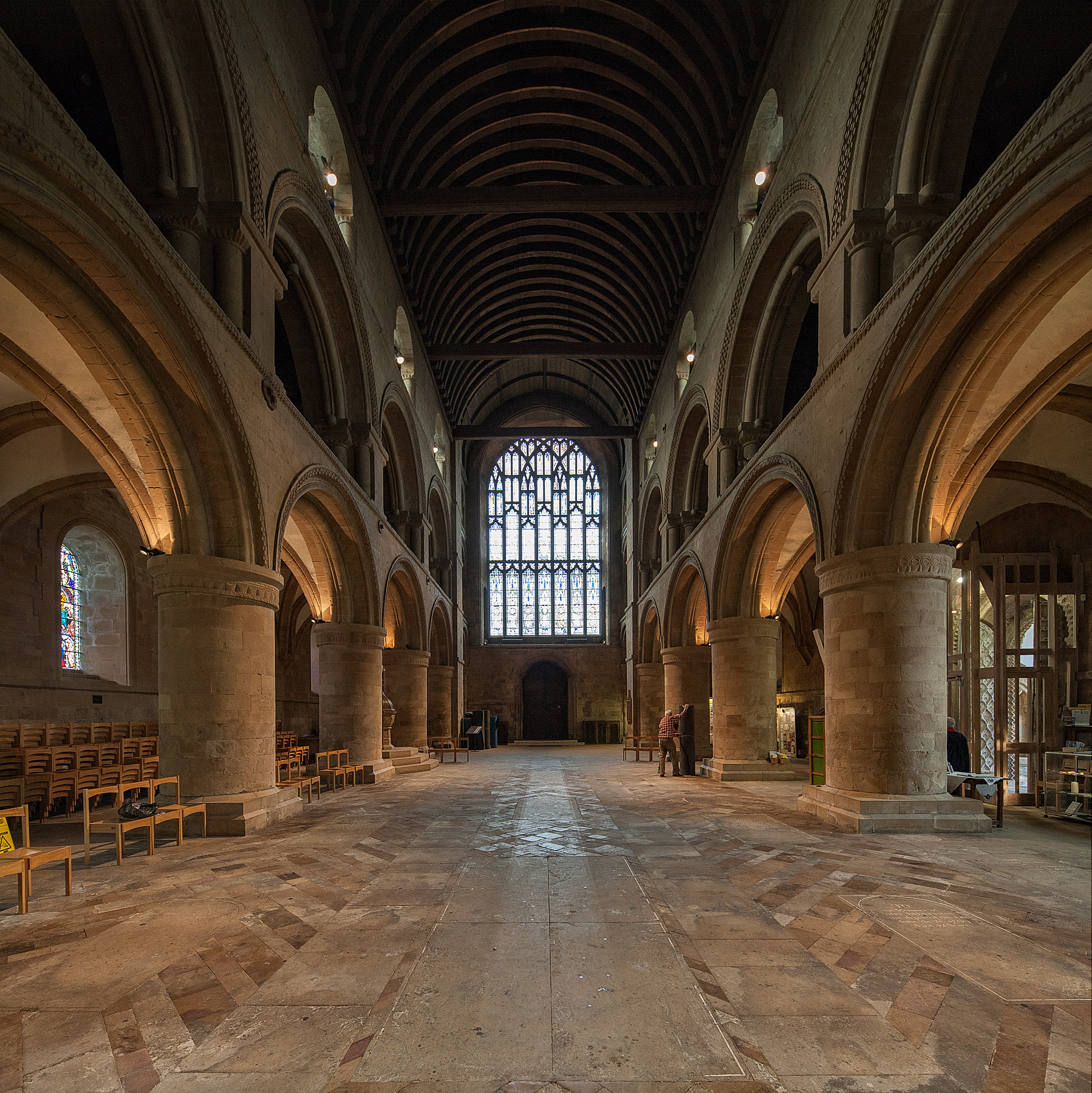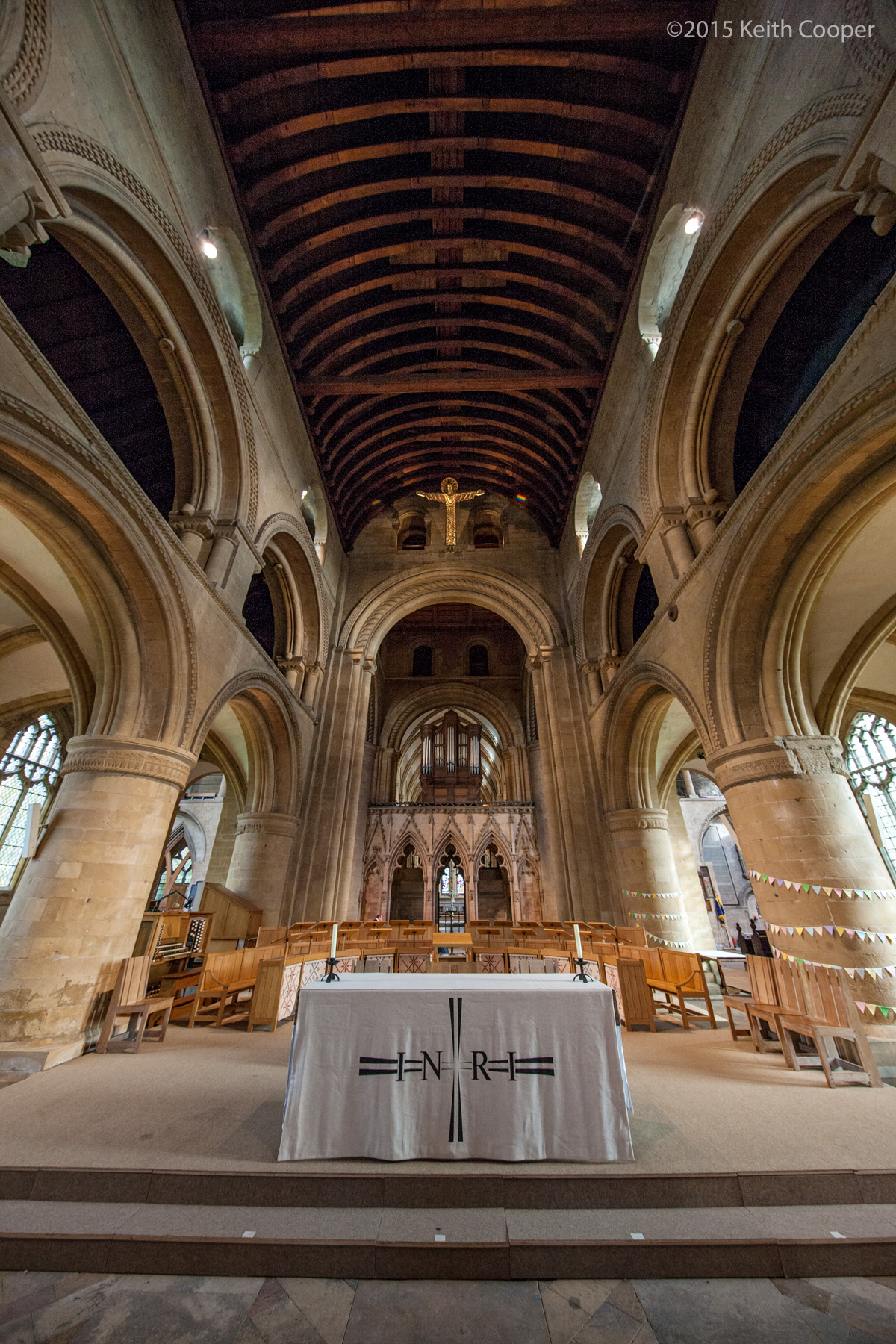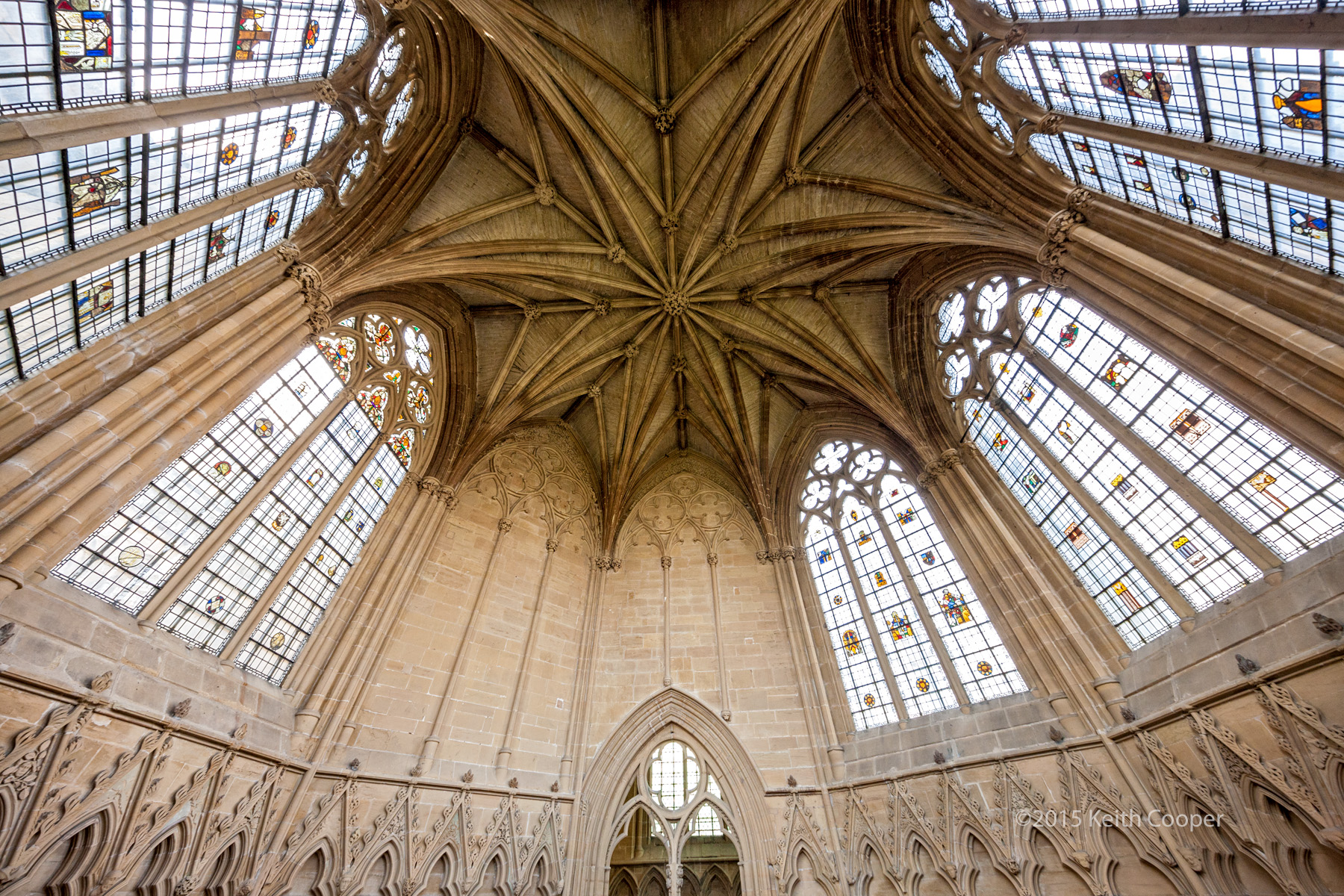A new lens at Southwell Minster
Southwell Minster – wide views
Looking at a new Canon lens
Canon have just released a brand new lens, an ultra-wide zoom that goes to the rather short focal length of 11mm.
This is a great addition to their range of lenses, but what does it actually do, that makes a difference to an architectural photographer like myself? When all is said and done, the kit you use is just a tool to get images that work and meet the client’s needs.
Click on any image to see at full size

I’ve included a few photos here that use this new lens, and a few others taken with different lenses that show that it hasn’t quite rendered my other kit irrelevant.
The photos were taken (hand held) on a brief visit to Southwell Minster. This is a beautiful English cathedral that shows the considerable changes in architecture, from the western Norman towers and nave (~1150) and the Early English chancel (~1234) and the Decorated Gothic ceiling of the chapter house (~1286).
I’ve written up a much longer, more technical review of the EF11-24mm F4L lens on the main Northlight site that includes a whole variety of images and information if you’re curious.
The view from through the gateway shows just how large the field of view is, on the new 11-24 lens at 11mm.
The surroundings at Southwell are much less ‘cluttered’ than many cathedrals in large cities.
The towers with their distinctive roofs are unusual in the UK
The view of the towers is using my TS-E17mm shift lens – an essential lens in my architectural work, where I want vertical lines to be non-converging.
The four images below show the differences between styles in the nave and chancel. Three of the images are stitched images using a shift lens, whilst the one of the altar is using the 11-24 at 11mm, where the powerful convergence of verticals from pointing the lens upwards is very clear.
Click on any image to see at full size.
If you visit, don’t miss the chapter house, with its intricate carvings of plants, trees and other creatures.
The wide view of the entrance and ceiling.
I’ll finish with a ceiling view – taken with a circular fish-eye lens (see an earlier post for more examples of such views)











